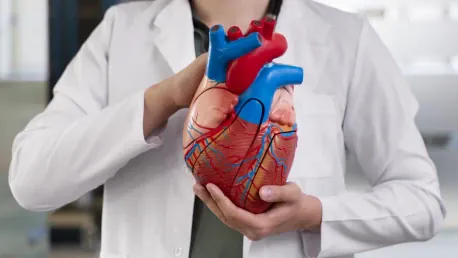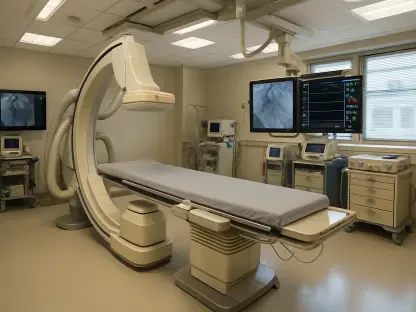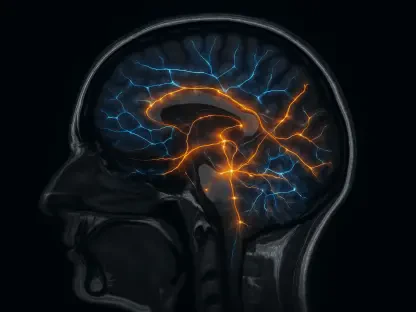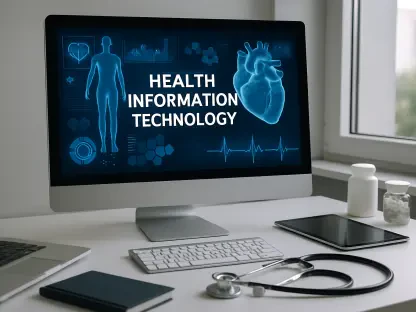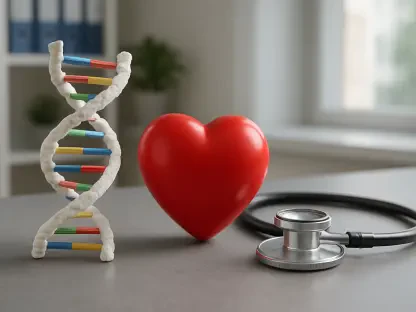Heart disease remains one of the leading causes of death worldwide, with conditions like arrhythmogenic cardiomyopathy (ACM) posing significant treatment challenges. However, recent advancements in precision robotics are offering new hope for effective therapies. This article explores the groundbreaking work of researchers from The Hospital for Sick Children (SickKids) and the University of Toronto Robotics Institute, who are pioneering innovative solutions to transform heart disease treatment.
The Urgent Need for Novel Therapies
Understanding Arrhythmogenic Cardiomyopathy (ACM)
Arrhythmogenic cardiomyopathy (ACM) is a severe inherited heart condition characterized by irregular heartbeats, often leading to sudden cardiac death in young adults. Current treatment options for ACM are limited, with heart transplantation being the only curative solution. This highlights the urgent need for novel therapeutic strategies to improve the lives of individuals living with ACM.
In ACM, mutations in genes that encode proteins crucial for the structural integrity of heart tissue cause cells to become weak and unable to contract properly. This leads to irregular heart rhythm, heart failure, and sometimes, sudden cardiac death. The fact that ACM is a genetic disorder makes it especially challenging to treat, as the underlying problem stems from the very building blocks of life. Current therapies mostly aim to manage symptoms and prevent complications but fall short of providing a comprehensive cure. Therefore, the search for effective and precise treatment methods is more crucial than ever.
Limitations of Traditional Drug Screening
Traditional drug screening methods, commonly used in cancer research, fall short when applied to heart disease. These methods cannot account for the three-dimensional and constantly moving nature of heart cells, making it challenging to identify effective therapies for conditions like ACM. This necessitates the development of more sophisticated screening technologies tailored to the unique dynamics of heart cells.
Heart cells are not static; they are in constant motion, contracting and relaxing with each heartbeat. Conventional drug screening methods typically involve flat, static cell cultures, which are suitable for many types of cells but are inadequate for heart cells. This discrepancy means that potential therapies which show promise in static cell cultures might fail when administered to a beating heart. Thus, there is a critical need for advanced drug screening technologies that can mimic the dynamic environment of cardiac cells. Addressing this gap has been a significant focus for the team at SickKids and the University of Toronto Robotics Institute.
Collaborative Efforts in Precision Robotics
Interdisciplinary Collaboration
The advancements in precision robotics for heart disease treatment are the result of a collaborative effort between experts from SickKids and the University of Toronto Robotics Institute. Dr. Jason Maynes from SickKids, along with Drs. Yu Sun and Xinyu Liu from the University of Toronto, have combined their expertise to develop a cutting-edge robotic technology. This interdisciplinary collaboration underscores the importance of teamwork in driving scientific innovation.
Collaborations between different fields are often the catalyst for groundbreaking discoveries. In this case, the convergence of pediatric cardiology and robotic engineering has led to the creation of a highly sophisticated robotic system. Dr. Maynes’ expertise in the nuances of heart conditions and the intricate requirements for effective treatment provided the foundational knowledge. Meanwhile, Drs. Sun and Liu brought their proficiency in robotics, micro-engineering, and imaging technologies. Together, they have crafted a system that is not only cutting-edge but uniquely suited to the challenges posed by heart diseases like ACM.
Development of the Robotic Technology
The research team introduced a miniature robot equipped with a z-shaped micropipette and a 3D imaging system. This sophisticated system can precisely and swiftly inject fluorescent molecules into drug-treated beating heart tissue. By enabling high-throughput screening specifically tailored for the dynamic environment of heart cells, this technology streamlines the identification of potential therapies, addressing a critical challenge in cardiology.
Traditional methods of drug screening are inefficient and often yield inconsistent results when translated to a clinical setting due to the static nature of conventional cell models. The miniature robot developed by the team at SickKids and the University of Toronto overcomes this challenge by accurately mimicking the dynamic environment of the heart. The z-shaped micropipette allows for precision injection into minute, beating heart cells, while the 3D imaging system provides real-time visualization and analysis. This technological innovation allows researchers to conduct high-throughput screening, analyzing multiple drug candidates simultaneously and more efficiently than ever before.
Breakthroughs in High-Throughput Screening
Identifying Promising Therapies
The innovative robotic system has already yielded promising results. A study published in Science Robotics highlighted the successful identification of five potential therapies for ACM. One of these drug candidates, tested in collaboration with the Centro Nacional de Investigaciones Cardiovasculares (CNIC) in Spain, demonstrated a reduction in irregular heartbeats in a preclinical model of ACM. This finding showcases the technology’s capability to accelerate therapeutic discoveries and optimize treatment strategies.
The identification of these five potential therapies marks a significant milestone, not only for ACM patients but for the broader field of cardiology. Each identified drug candidate went through rigorous testing in a dynamic heart cell environment, ensuring their effectiveness in conditions that closely resemble those found in human patients. The successful preclinical trials point to a future where these therapies could move forward to clinical trials and eventually, real-world application. This breakthrough underscores the potential of precision robotics to transform traditional medical research, providing quicker, more reliable pathways to effective treatments.
Impact on Personalized Medicine
Dr. Maynes emphasizes the broader potential impact of this technology beyond ACM. SickKids’ vision, known as Precision Child Health, aims to deliver customized care for every patient. The ability to model specific patient conditions and quickly test therapies means treatments can be tailored to individual needs, improving overall patient outcomes. This approach represents a significant shift towards precision medicine, facilitated by technological innovations in robotics.
Precision medicine aims to address the complexities of individual patients rather than adopting a one-size-fits-all approach, which is often ineffective. By leveraging this advanced robotic screening system, medical practitioners can simulate the exact conditions of a patient’s unique heart disease and rapidly identify which therapies are most effective. This could lead to more personalized, effective treatment plans and ultimately, better healthcare outcomes. Furthermore, this technology holds promise for other dynamic cell conditions, potentially revolutionizing the way treatments are developed and administered for a range of diseases.
Funding and Support for Research
Esteemed Organizations Backing the Research
The research conducted by the team at SickKids and the University of Toronto has received substantial funding from various esteemed organizations. These include the Canadian Institutes of Health Research (CIHR), the Natural Sciences and Engineering Research Council of Canada (NSERC), the Ontario Research Fund – Research Excellence program, the Montgomery County Intermediate Unit (MCIU), and the SickKids Foundation. This support underscores the importance and potential impact of this groundbreaking research.
The financial backing from these prominent organizations has been crucial in the research’s progress and success. Funding is the lifeline of scientific research, providing the resources necessary to develop new technologies, conduct comprehensive studies, and collaborate with international institutions. The support from these reputable entities highlights the recognized importance and innovative potential of this research. Their investment in high-throughput robotic screening technology reflects a commitment to advancing medical science and improving patient care on a global scale.
The Role of Funding in Advancing Science
The financial backing from these organizations has been instrumental in enabling the development and application of the high-throughput robotic screening system. It highlights the critical role of funding in advancing scientific research and innovation. By investing in cutting-edge technologies and interdisciplinary collaborations, these organizations are helping to pave the way for more effective and personalized treatments for heart disease patients.
Research and development require significant financial investment to cover costs associated with equipment, personnel, and materials. Beyond these tangible needs, funding also enables the formation of interdisciplinary teams that bring together diverse expertise essential for groundbreaking innovation. This funding has made it possible to move from conceptual stages to practical applications, thereby accelerating the journey from laboratory findings to clinical implementation. The resulting advancements in precision robotics not only promise to revolutionize ACM treatment but also set a precedent for future research in various medical disciplines.
Future Implications and Innovations
Revolutionizing Heart Disease Treatment
The advancements in precision robotics represent a monumental step forward in treating heart diseases such as ACM. The ability to accurately inject and analyze potential drugs in a quick and efficient manner addresses a critical challenge in cardiology. This research not only opens the door for new therapies but also exemplifies the power of interdisciplinary collaboration and advanced technology in modern medicine.
The intersection of robotics and medical science opens new avenues for customized treatments, offering hope for conditions previously deemed too complex for traditional methods. The high precision and efficiency of the new robotic system ensure that potential therapies can be identified and tested more rapidly, reducing the time required to bring new treatments from the lab to the clinic. This capability is particularly critical in conditions like ACM, where timely intervention can significantly impact patient survival and quality of life. As the technology evolves, it will likely play an increasingly important role in cardiology and other medical fields.
Broader Applications and Future Research
Heart disease remains one of the top causes of death worldwide, with specific conditions like arrhythmogenic cardiomyopathy (ACM) presenting major treatment challenges. However, recent strides in precision robotics are bringing new hope for effective therapies. This article delves into the pioneering efforts of researchers from The Hospital for Sick Children (SickKids) and the University of Toronto Robotics Institute. These experts are at the forefront of innovative solutions that promise to revolutionize heart disease treatment.
Their work, focusing on precision robotics, aims to offer more accurate and effective therapeutic options for patients suffering from heart disease, including those with particularly difficult conditions like ACM. By utilizing advanced technology, they are working on breakthroughs that might change the face of how heart diseases are treated, potentially offering better outcomes and improved quality of life for patients. This research signifies a hopeful step forward in the battle against one of the world’s most persistent health issues.
